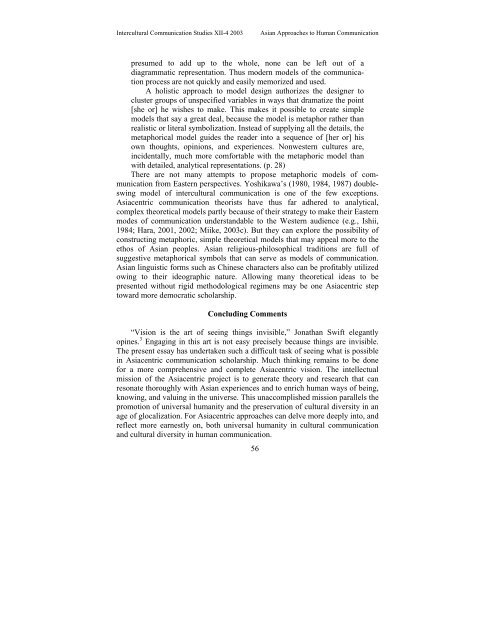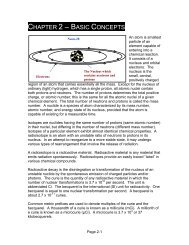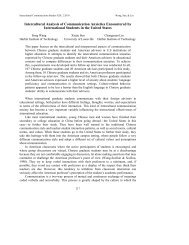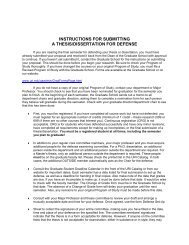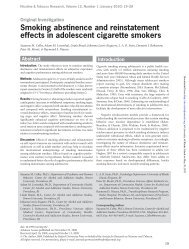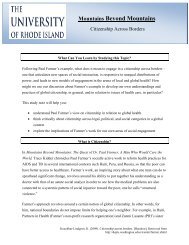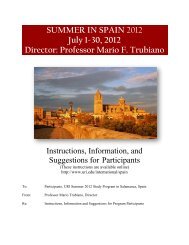asian approaches to human communication - University of Rhode ...
asian approaches to human communication - University of Rhode ...
asian approaches to human communication - University of Rhode ...
Create successful ePaper yourself
Turn your PDF publications into a flip-book with our unique Google optimized e-Paper software.
Intercultural Communication Studies XII-4 2003 Asian Approaches <strong>to</strong> Human Communication<br />
presumed <strong>to</strong> add up <strong>to</strong> the whole, none can be left out <strong>of</strong> a<br />
diagrammatic representation. Thus modern models <strong>of</strong> the <strong>communication</strong><br />
process are not quickly and easily memorized and used.<br />
A holistic approach <strong>to</strong> model design authorizes the designer <strong>to</strong><br />
cluster groups <strong>of</strong> unspecified variables in ways that dramatize the point<br />
[she or] he wishes <strong>to</strong> make. This makes it possible <strong>to</strong> create simple<br />
models that say a great deal, because the model is metaphor rather than<br />
realistic or literal symbolization. Instead <strong>of</strong> supplying all the details, the<br />
metaphorical model guides the reader in<strong>to</strong> a sequence <strong>of</strong> [her or] his<br />
own thoughts, opinions, and experiences. Nonwestern cultures are,<br />
incidentally, much more comfortable with the metaphoric model than<br />
with detailed, analytical representations. (p. 28)<br />
There are not many attempts <strong>to</strong> propose metaphoric models <strong>of</strong> <strong>communication</strong><br />
from Eastern perspectives. Yoshikawa’s (1980, 1984, 1987) doubleswing<br />
model <strong>of</strong> intercultural <strong>communication</strong> is one <strong>of</strong> the few exceptions.<br />
Asiacentric <strong>communication</strong> theorists have thus far adhered <strong>to</strong> analytical,<br />
complex theoretical models partly because <strong>of</strong> their strategy <strong>to</strong> make their Eastern<br />
modes <strong>of</strong> <strong>communication</strong> understandable <strong>to</strong> the Western audience (e.g., Ishii,<br />
1984; Hara, 2001, 2002; Miike, 2003c). But they can explore the possibility <strong>of</strong><br />
constructing metaphoric, simple theoretical models that may appeal more <strong>to</strong> the<br />
ethos <strong>of</strong> Asian peoples. Asian religious-philosophical traditions are full <strong>of</strong><br />
suggestive metaphorical symbols that can serve as models <strong>of</strong> <strong>communication</strong>.<br />
Asian linguistic forms such as Chinese characters also can be pr<strong>of</strong>itably utilized<br />
owing <strong>to</strong> their ideographic nature. Allowing many theoretical ideas <strong>to</strong> be<br />
presented without rigid methodological regimens may be one Asiacentric step<br />
<strong>to</strong>ward more democratic scholarship.<br />
Concluding Comments<br />
“Vision is the art <strong>of</strong> seeing things invisible,” Jonathan Swift elegantly<br />
opines. 3 Engaging in this art is not easy precisely because things are invisible.<br />
The present essay has undertaken such a difficult task <strong>of</strong> seeing what is possible<br />
in Asiacentric <strong>communication</strong> scholarship. Much thinking remains <strong>to</strong> be done<br />
for a more comprehensive and complete Asiacentric vision. The intellectual<br />
mission <strong>of</strong> the Asiacentric project is <strong>to</strong> generate theory and research that can<br />
resonate thoroughly with Asian experiences and <strong>to</strong> enrich <strong>human</strong> ways <strong>of</strong> being,<br />
knowing, and valuing in the universe. This unaccomplished mission parallels the<br />
promotion <strong>of</strong> universal <strong>human</strong>ity and the preservation <strong>of</strong> cultural diversity in an<br />
age <strong>of</strong> glocalization. For Asiacentric <strong>approaches</strong> can delve more deeply in<strong>to</strong>, and<br />
reflect more earnestly on, both universal <strong>human</strong>ity in cultural <strong>communication</strong><br />
and cultural diversity in <strong>human</strong> <strong>communication</strong>.<br />
56


